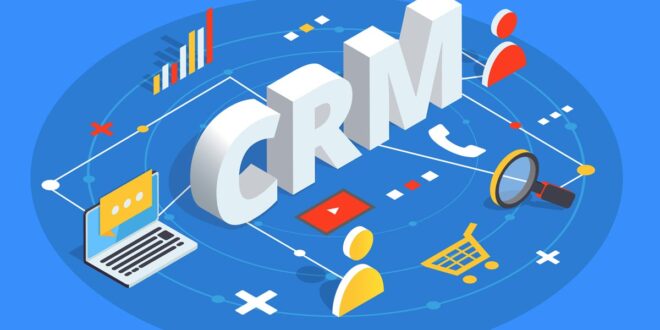Integrating CRM offers a chance to reduce workflow strain and achieve superior outcomes via automation. By leveraging technology, tasks become seamless, saving time and resources. Effortlessly manage interactions, boost efficiency, and unlock insights that drive growth.
CRM implementation paves the way for effortless success through intelligent automation. This transformative approach enhances customer relationships, amplifies data-driven decisions, and empowers teams to excel collaboratively. Follow this guideline to pick the best CRM for solar business or any other niche.
Step 1: Define the Purpose of the System
Programs can be divided into 3 types:
- For marketing. Emphasis on analytics and segmentation of the customer base. Systems customized for marketing offer built-in end-to-end CRM analytics and support more integration tools with call tracking.
- For customer experience. This software offers more tools to automate brand communication with customers, which can offload administrative staff. Such programs can automatically send notifications and reminders to customers, respond to requests, and schedule company employees.
- For sales. Such systems have more flexible funnel configurations and more settings for process automation — CRM will lead the funnel itself, and managers will only have to communicate with customers.
Formally, all systems are universal, and their customization can be enabled in any direction. The difference is only in the cost of refinement and usability level.
Step 2: Choose Program Specialization

When embarking on CRM implementation, a pivotal decision revolves around program specialization. CRM programs come in two main categories: universal and industry-specific. Each possesses distinct advantages and considerations that businesses must weigh.
Universal CRM solutions offer rapid deployment, ideal for swift integration into existing workflows. However, these versatile systems demand additional resources for customizations that align with unique business processes. They are generally easier to learn and offer a more budget-friendly approach, making them suitable when intricate industry requirements aren’t a primary concern.
On the other hand, industry-specific CRMs are finely tuned to cater to the intricacies of a particular business sector and its corresponding market dynamics. These specialized systems excel when companies grapple with complex interaction chains between their brand and clientele. By accommodating niche-specific intricacies, industry-specific CRMs enhance efficiency and tailor customer experiences.
The choice between the two hinges on a company’s priorities, resources, and the extent to which their operations necessitate industry-specific intricacies. Careful consideration of these factors ensures that CRM implementation aligns harmoniously with business goals, boosting productivity and optimizing customer relationships.
Step 3: Look at the Functionality
The whole list of features in the best CRMs, like Redtag, is divided into several modules:
- Sales funnel. Support for automation tools is one of the most important factors. The software should independently create deals from leads, create reminders for managers, and translate deals through the funnel stages.
- Projects and tasks. This should include working chats for employees, time tracking, and staffing planning.
- Data processing. The system must capture all the client data and register the collected information in personalized cards. The program saves conversations of the client with managers, history of viewing and buying goods, payment methods, etc. All collected data is further used to personalize marketing and better customer support.
Look at the flexibility of the user-friendly interface and the visibility of elements for users. Menus should be customized for each employee, and the access system should open data and settings according to the staff’s job title, which will also ease employee training.
Step 4: Evaluate Malleability and Scalability

Selecting the licensing format is important because it determines the possibilities for program modification, the level of privacy, and data security.
- Cloud. Companies access CRM when paying a monthly subscription. The system itself and customer data are hosted on the developer’s servers which are responsible for product availability and updates.
- Boxed. A perpetual or annual license allows businesses to install the software on their own or leased servers.
The cloud version suits small businesses, while the boxed edition is perfect for companies with a large staff and a developed network of branches or franchises. According to the reviews, the availability of a boxed edition can be justified from the point of view of legislation or internal company policy.
Step 5: Consider Integration Capabilities
As you proceed in choosing a CRM system, delve into its integration capabilities. Examine how effectively the CRM can harmonize with your existing tools and software. Emphasize the importance of a fluid data flow, ensuring that information seamlessly traverses between the CRM, email, marketing, and other pivotal platforms.
Additionally, assess the system’s compatibility with Application Programming Interfaces (APIs), which underpins a cohesive technological ecosystem. By prioritizing integration, you pave the way for operational optimization and streamlined workflows, facilitating enhanced productivity and data-driven decision-making.
Step 6: Review User-Friendliness and Training

When embarking on CRM system selection, user-friendliness and training play a pivotal role in successful adoption. Consider the following aspects:
- Evaluate the user interface for intuitiveness and ease of navigation, ensuring a minimal learning curve for your team.
- Prioritize platforms with comprehensive user training resources, including guides, tutorials, and responsive customer support.
- Assess the availability of user onboarding assistance, ensuring a smooth transition for your workforce.
By emphasizing user-friendliness, you enhance the likelihood of swift and effective adoption, maximizing the system’s potential. Well-trained employees are better equipped to harness its capabilities, resulting in increased efficiency and improved customer interactions.
A user-centric approach not only boosts morale but also accelerates the realization of return on investment. Selecting a CRM system that excels in these aspects contributes to long-term success and the seamless integration of the new solution into your business processes.
Step 7: Evaluate Data Security and Compliance
When navigating the process of CRM selection, robust data security and compliance are paramount. Take the following factors into account:
- Scrutinize the CRM system’s security measures, encompassing data encryption, access controls, and regular updates.
- Ensure alignment with industry-specific regulations (such as GDPR, HIPAA) to safeguard sensitive information and maintain legal adherence.
- Verify the presence of comprehensive backup and recovery protocols to mitigate data loss risks and ensure business continuity.
By prioritizing data security and compliance, you fortify your organization against potential breaches, instill customer trust, and demonstrate your commitment to maintaining the integrity of confidential data throughout your CRM operations.
 Imagup General Magazine 2024
Imagup General Magazine 2024



